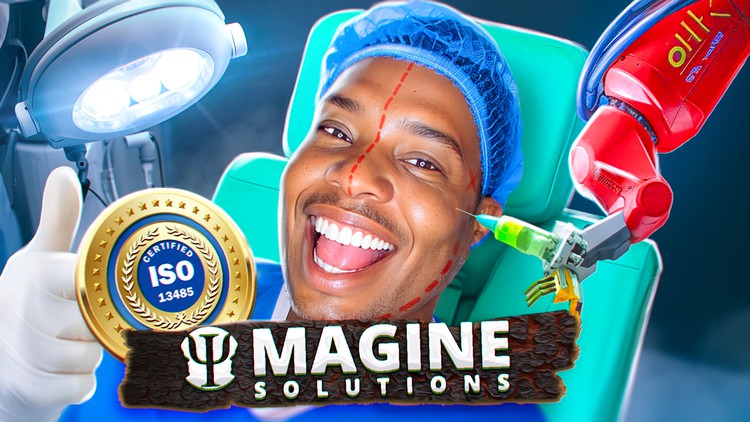ISO 13485 FDA Medical Device Regulation For QMS (Part 1 / 2)
Learn all about ISO 13845 FDA Medical Device Regulation and Quality Management System in this online course
4.18 (195 reviews)

821
students
1 hour
content
Apr 2024
last update
$19.99
regular price
What you will learn
Definitions of key terms in ISO standards: 'shall,' 'should,' 'may,' and 'can.'
Understanding the mandatory, recommended, permitted, and possible requirements in ISO standards.
Evaluation of medical device manufacturer's quality management systems.
Emphasis on European medical device regulations and the Medical Device Single Audit Program (MDSAP).
Understanding development, implementation, and maintenance requirements for medical device stakeholders.
Focus on ISO 13485:2016, the most recent revision.
Distinction between ISO level, European level, and national level standards.
Introduction to harmonized standards and their adoption by European standardization organizations.
Overview of ISO 13485's international scope and Z annexes related to European requirements.
Understanding the Medical Device Single Audit Program (MDSAP).
Purpose of MDSAP in preventing duplication of auditing efforts.
Coverage of regulatory requirements for medical devices in Australia, Brazil, Canada, Japan, and the United States.
Development and key players of the MDSAP.
Importance of defining the scope of the Quality Management System (QMS).
Factors to consider when determining the QMS scope.
ISO 13485 Clause 4.1.6 requirements for validating computer software.
Applicable software validation processes.
Examples of software requiring validation.
Requirements for documented QMS tailored to the organization's nature and purposes.
Specific details and elements of QMS documentation.
Examples of required QMS documentation.
Importance of technical documentation in proving medical devices meet safety and performance requirements.
Different terms for technical documentation.
Requirements for medical device files (MDF) or technical files.
ISO 13485 requirements for document and record control.
Criteria for document control ensuring compliance and effectiveness.
Lifetime determination of medical devices and handling of obsolete documents.
Role of upper management in implementing QMS.
Upper management's commitment, Quality Policy, Quality Objectives, and management reviews.
QMS planning and maintaining integrity during changes.
Defining and documenting responsibilities and positions of QMS-related personnel.
Delegation of authority by upper management.
Importance of good internal communication for QMS understanding.
Elements evaluated by auditors during the management review.
Data requirements for the management review process.
Conducting a management review for an effective QMS.
Understanding ISO 13485 requirements for resource management in the QMS.
Evaluation of QMS-related resources: human resources, infrastructure, and work environment.
Importance of competent employees and the risk-based approach in competency requirements.
ISO 13485 requirements for proper infrastructure supporting QMS processes.
Attention points during audits: buildings, equipment, and supporting services.
Considerations for equipment design, installation, and maintenance.
Regulation of the production environment for medical device quality.
Methods to enhance safety and cleanliness in work environments.
Parameters influencing controls for a safe work environment.
Determining process inputs, outputs, sequence, and responsibilities in product realization.
Requirements for quality objectives, resources, verification, monitoring, and records.
Consistency with QMS requirements in product realization activities.
Definition of "risk" and "risk management" in the context of medical devices.
Risk management requirements for personnel, external providers, purchased products, and software validation.
Role of risk assessments in reducing or controlling risk throughout the product realization process.
Use of risk matrices to identify hazards and address safety requirements.
Influence of risk management on various aspects of product realization.
Involvement in customer-related processes, including receiving requirements and managing orders.
Considerations for determining the safety of medical devices for customer use.
Documentation of product requirements, regulatory requirements, and user training.
Significance of labeling in customer communication.
Requirements for physical labels and e-labeling.
Critical role of labeling in preventing medical device recalls.
Screenshots




5733342
udemy ID
12/28/2023
course created date
12/29/2023
course indexed date
Bot
course submited by